Manhattan’s oldest building dates back to 1719. While most of Manhattan’s original structures have been demolished and redeveloped over the years, there are several very old and historically significant buildings which are still standing today. Click on the links below to learn more about the oldest buildings in Manhattan, NYC.
The Oldest Buildings in Manhattan:
54 Pearl Street in Financial District [1719]
209 Broadway in Financial District [1766]
273 Water Street in Fulton/Seaport [1773]
18 Bowery in Chinatown [1785]
279 Water Street in Financial District [1794]
260 Broadway in Financial District [1811]
3 Henry Street in Two Bridges [1845]
172 Norfolk Street in the Lower East Side [1849]
157 East 78th Street on the Upper East Side [1861]
208-218 East 78th Street on the Upper East Side [1865]
129 East 17th Street in Gramercy Park [1879]
58 Rivington Street in the Lower East Side [1904]
280 Broome Street in the Lower East Side [1927]
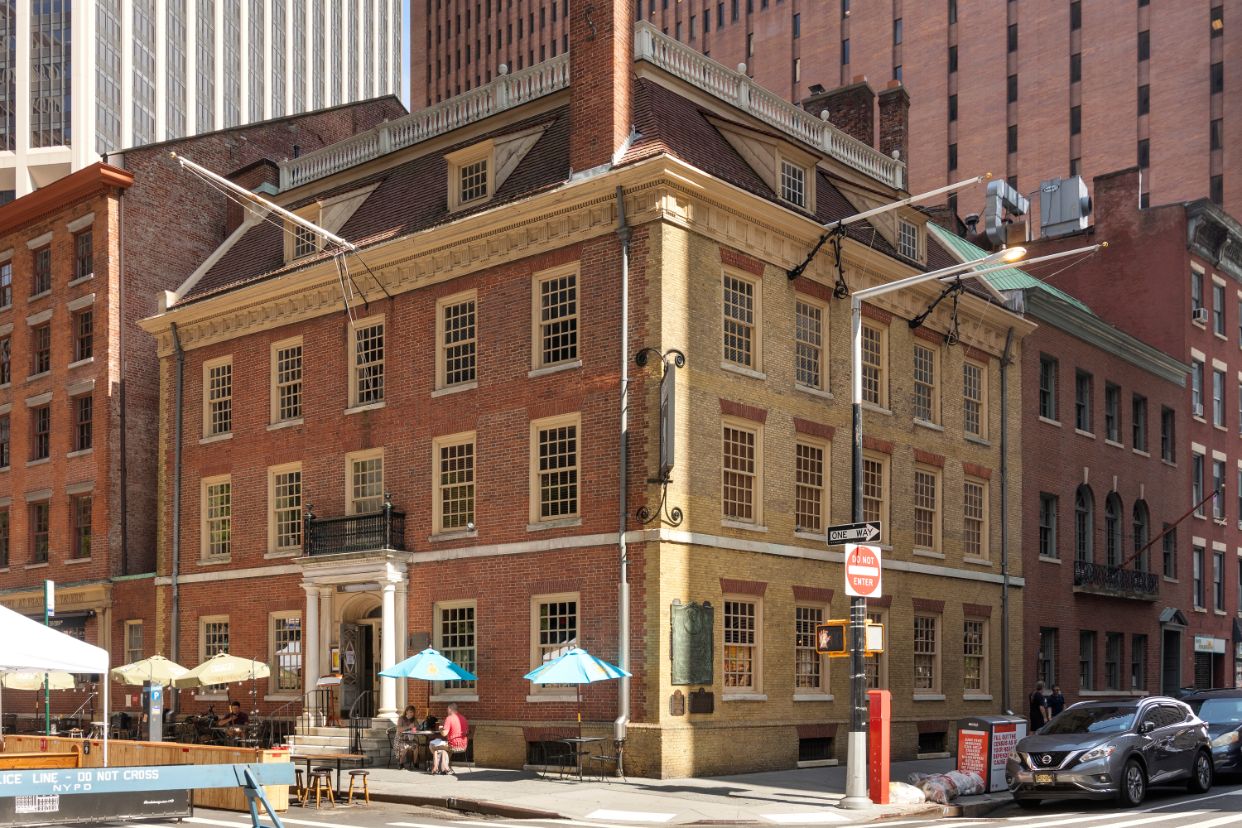
54 Pearl Street was built in 1719 by the De Lancey family. The land itself, formerly occupied by water until the late 1600s, was landfilled by the city and sold to its first owner in 1686. It has been the site of the Fraunces Tavern since 1762. Although the facade was altered several times over the years, it was restored to its original 18th century appearance between 1905 and 1907. 54 Pearl Street was designated as a New York City Landmark in 1965.
54 Pearl Street - View on Google Maps
Our Discretion, Your Advantage
Our traditional partner brokers never openly discount which means less disruption and better execution for you.
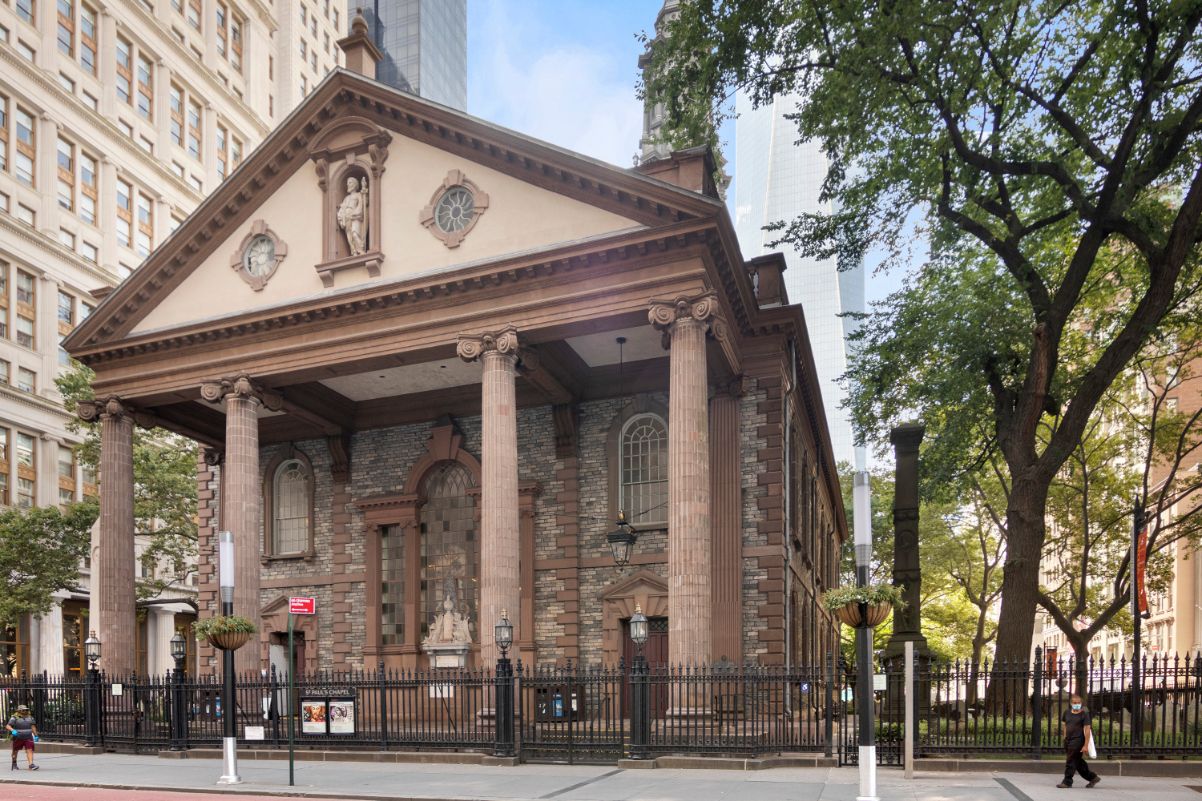
209 Broadway is the location of Saint Paul’s Chapel which was built in 1766. It is one of the only surviving churches from New York City’s colonial era. George Washington attended services here after he took the oath of office on April 30th, 1789. It was also a place of worship for American and British officers during the Revolution.
St. Paul’s Chapel was named a National Historic Landmark in 1960 and designed as a New York City Landmark and placed on the National Register of Historic Places in 1966. The Chapel is home to an active worshipping community.
209 Broadway - View on Google Maps
Save 2% On Your Home Purchase
Save thousands on your home purchase with a buyer agent commission rebate from Hauseit
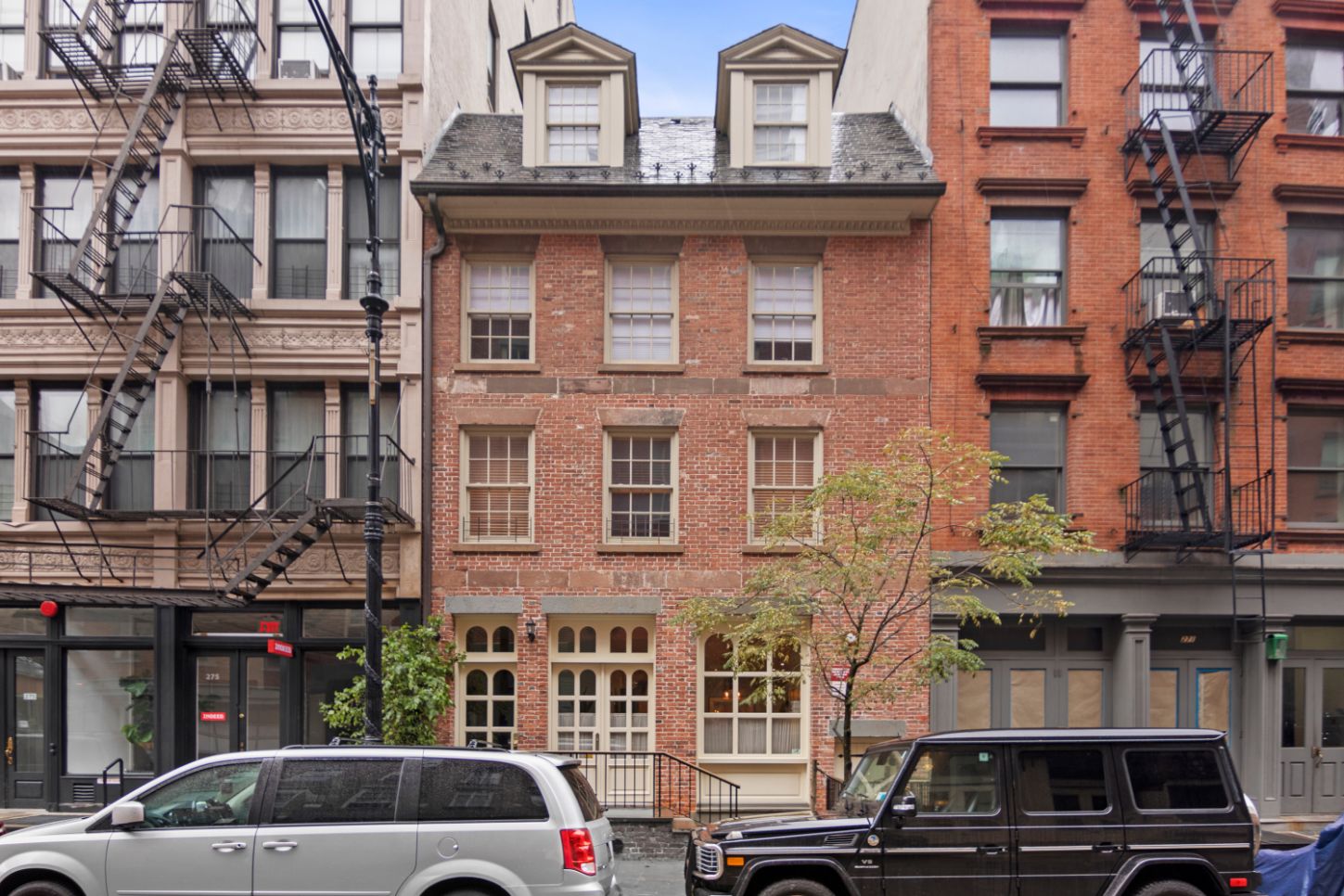
The Georgian style house at 273 Water Street was built in 1773 by Captain Joseph Rose, a mahogany trader. At the time of its construction which was long before landfills widened the island, the East River ran just behind the property. The building was used as a tavern in the 1860s and rose to infamy for being the home of Christopher Keyburn’s Sportsman’s Hall, which was used as a venue for rat and dog fights. Stemming from this sordid activity, 273 Water was often just referred to as the “Rat Pit.”
273 Water Street was ravaged by two fires, the first in 1904 and 1974. The property was seized by the city in 1976 for unpaid taxes and was eventually sold to a small, private developer in 1997. Today, 273 Water Street is a 4 unit condo building. Apartment #2 sold for $1,700,000 in Mach 2017.
273 Water Street - View on Google Maps
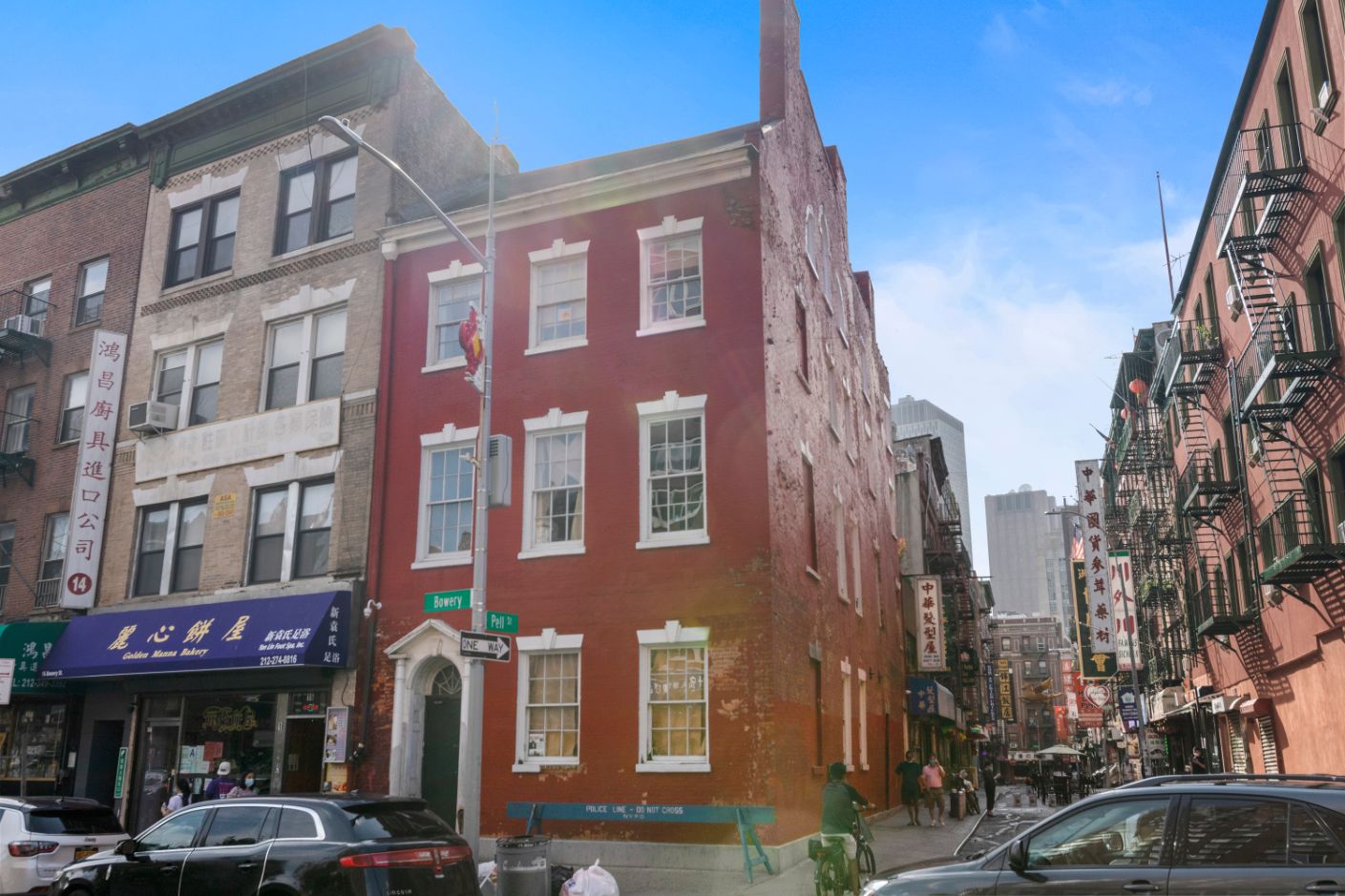
The Edward Mooney House, located at 18 Bowery, was built in 1785. It is New York City’s oldest surviving brick row house which dates back to the American Revolution, shortly after the British evacuated New York. Its architecture blends both pre-Revolutionary Georgian and Federal styles.
18 Bowery - View on Google Maps
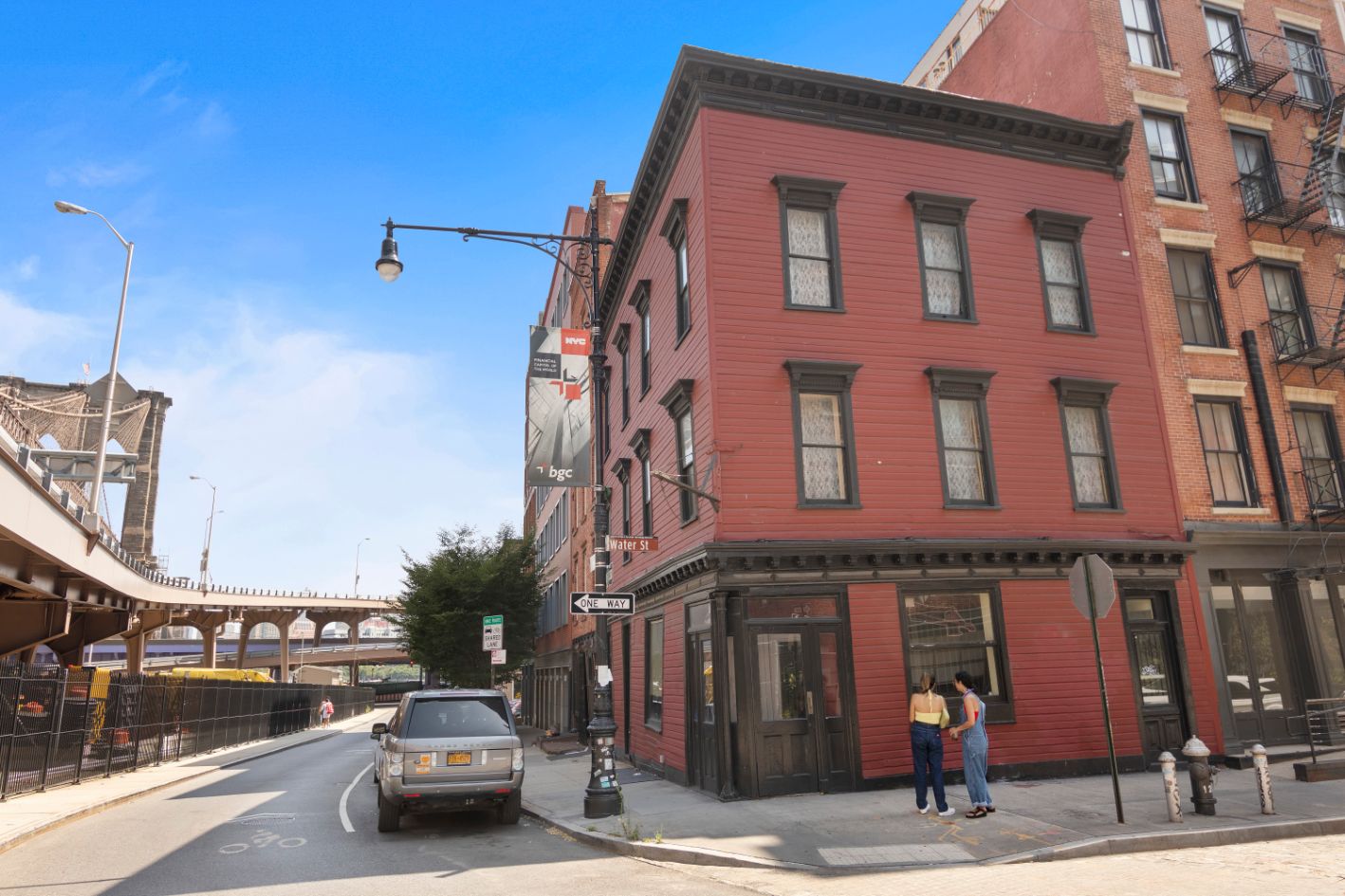
279 Water Street was built in 1794, coinciding with George Washington’s second term as President of the United States. It predates the adjacent Brooklyn Bridge which opened in 1883. The structural beams of 279 Water were most likely cut from first-growth timber which were probably around 200 years old at the time, meaning that parts of 279 Water may be 400+ years old. It’s described as “New York City’s oldest commercial wood frame,” according to owners of the Bridge Cafe, the name of the most recent drinking establishment to call 279 Water home.
The building was heavily damaged during Hurricane Sandy on October 29th, 2012, and Bridge Cafe has been closed ever since. According to the owners, the building needed “85% of its wood support in the basement replaced, all new electric, (and) new floors and walls in both the dining room and kitchen.”
279 Water Street - View on Google Maps
A Full Service Listing for 1%
Sell your home with a traditional full service listing for just one percent commission.
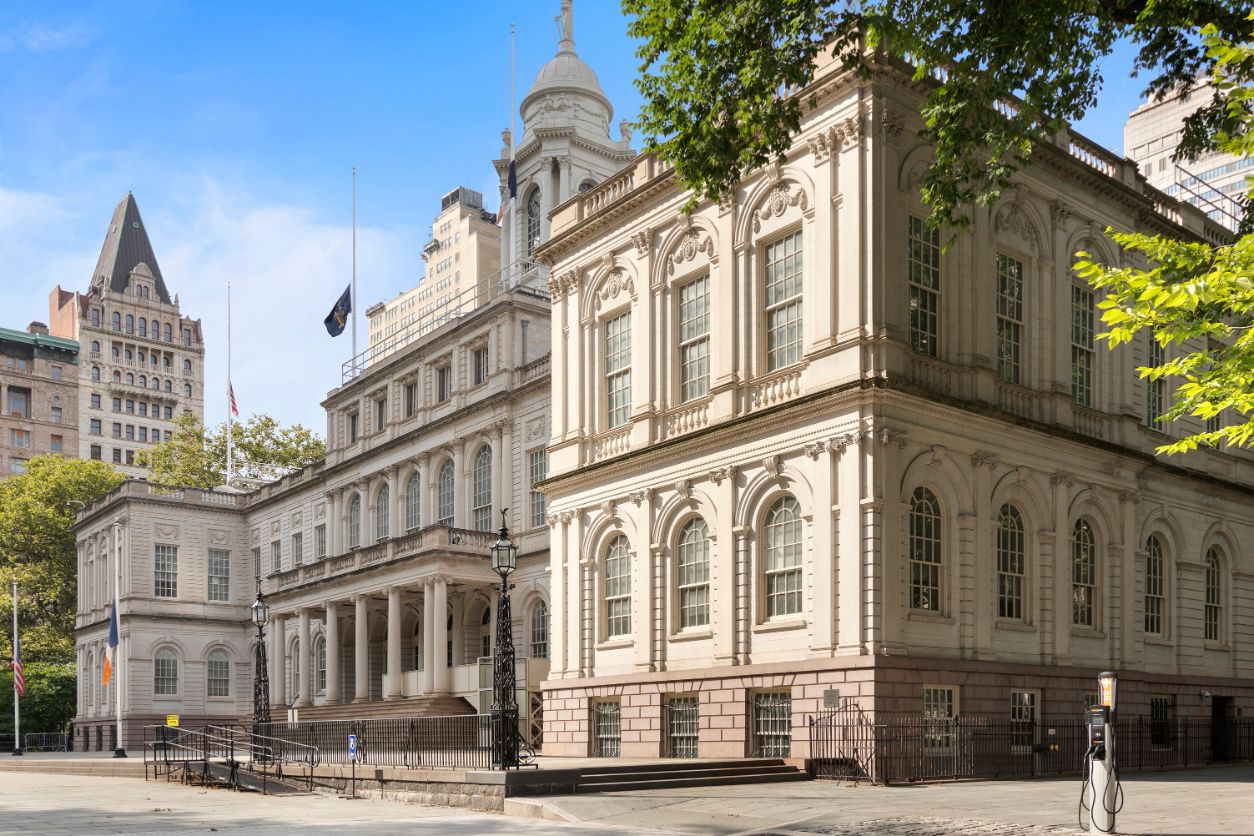
New York City Hall, located at 260 Broadway, was built in 1811. It is the oldest continuously operating city hall in the country. It houses the offices of the Mayor and the President of the City Council, meeting rooms of the city council and Room No. 9 which is used by the press. New York City Hall is is both a New York City Landmark and a National Historic Landmark which is listed on the National Register of Historic Places.
260 Broadway - View on Google Maps
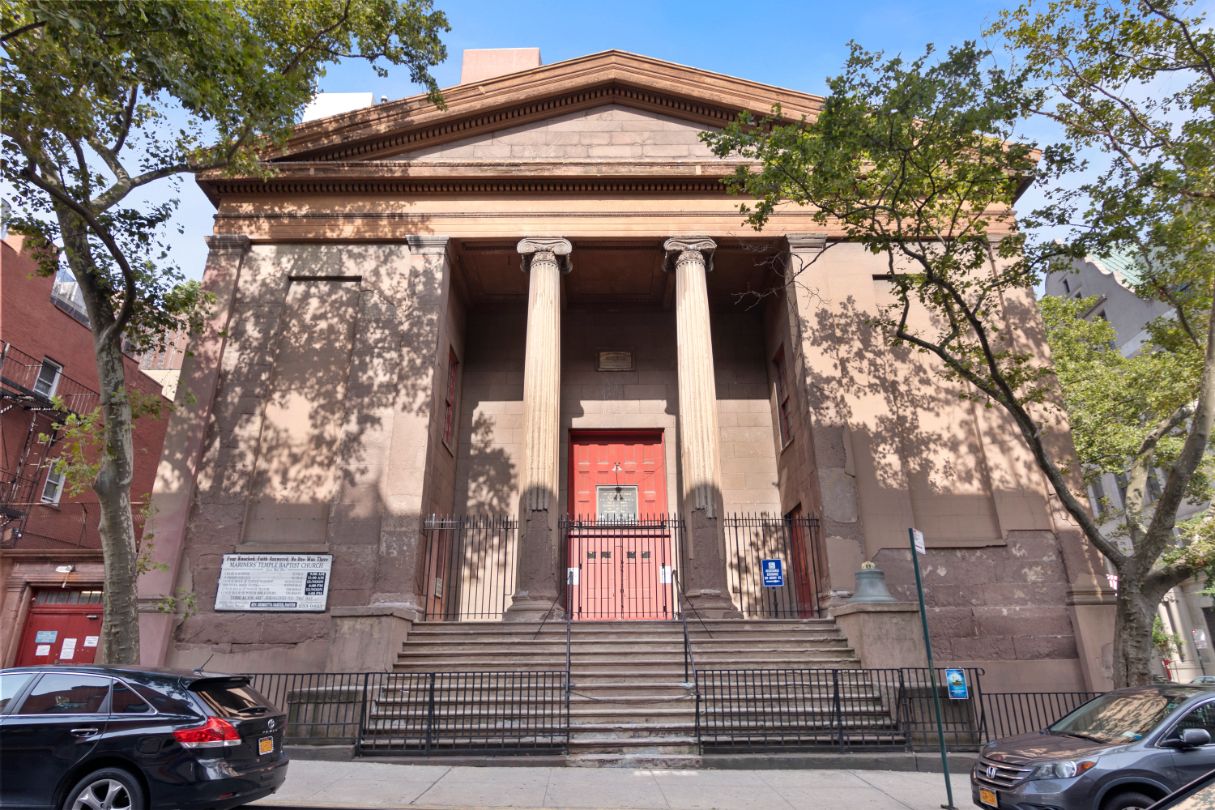
Mariner’s Temple, located at 3 Henry Street / 12 Oliver Street in Lower Manhattan, is a Baptist church which was built in 1845. It is located in the Two Bridges neighborhood of Downtown, in close proximity to Bowery, the Lower East Side and Chinatown. The structure is a fine example of simplistic Greek Revival Architecture. It was originally known as the Oliver Street Baptist Church.
3 Henry Street - View on Google Maps
Our Discretion, Your Advantage
Our traditional partner brokers never openly discount which means less disruption and better execution for you.
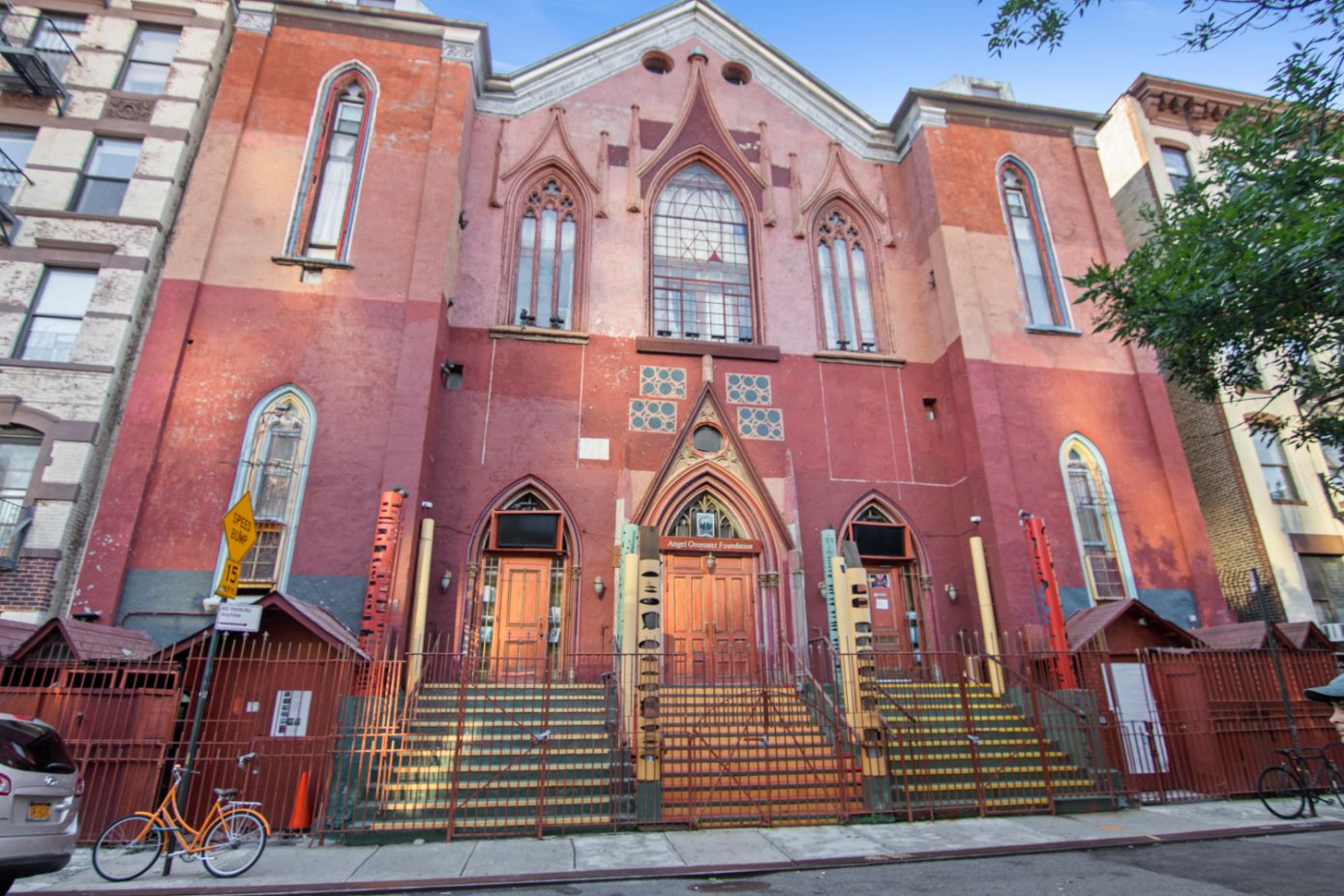
Erected in 1849, 172 Norfolk Street is the home of the Angel Orensanz Center, a landmarked art and performance space in the Lower East Side. It is the oldest surviving synagogue building in New York City, and it is occasionally still used as such today. Built in Gothic Revival style, it was the largest synagogue building in America at the time of its completion in 1849. The building was abandoned in 1974 and subsequently purchased by Spanish painter and sculptor Angel Orensanz who restored and repurposed the structure.
172 Norfolk Street - View on Google Maps
Save 2% On Your Home Purchase
Save thousands on your home purchase with a buyer agent commission rebate from Hauseit
157 East 78th Street is part of the East 78th Street Houses, a row of five attached brick houses constructed as part of an original group of 11 built in 1861. The East 78th Street Houses are a New York City Landmark, and they’re also listed on the National Register of Historic Places. They are considered to be some of the oldest townhouses on the Upper East Side of Manahttan.
157 East 78th Street - View on Google Maps
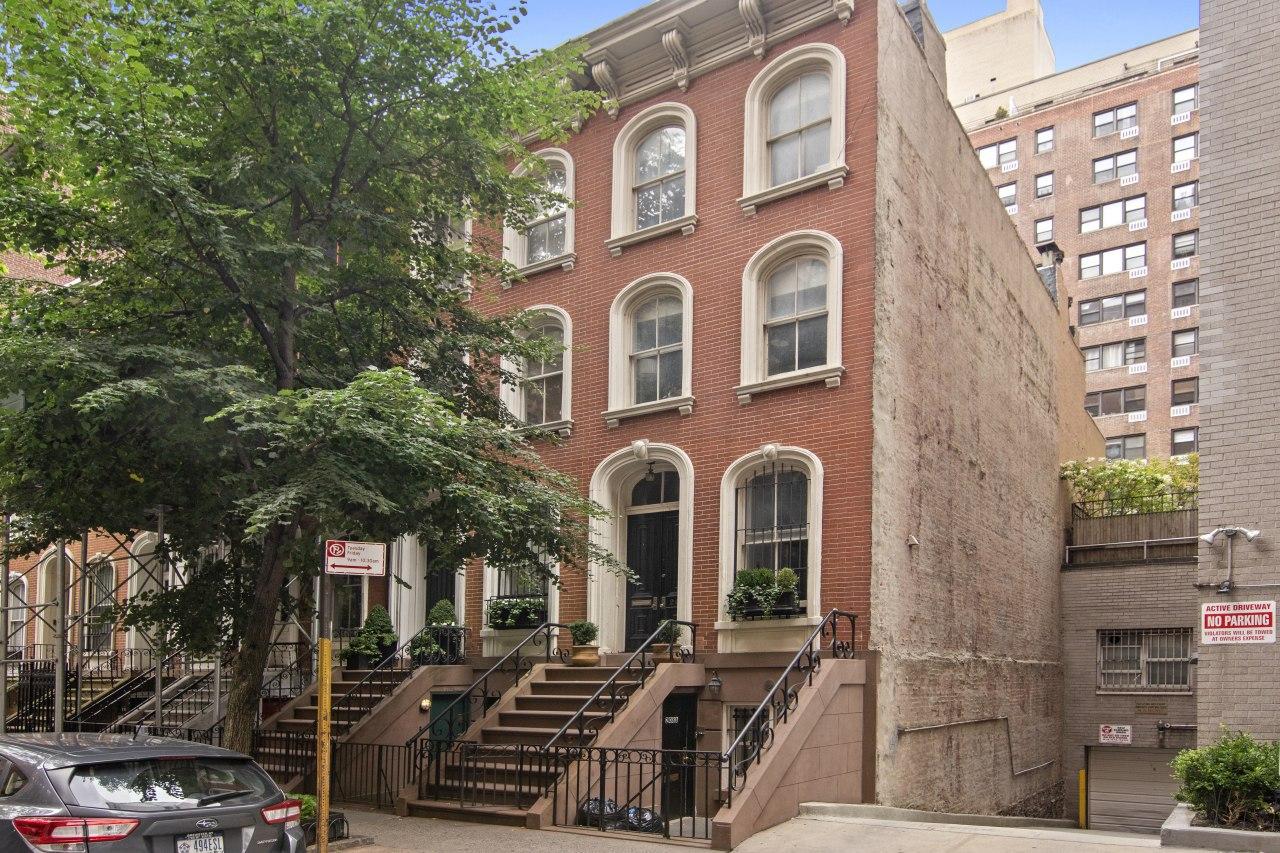
208-218 East 78th Street is home to six Italianate style attached brick rowhouses. Collectively, they are the second oldest group of buildings on the Upper East Side. They are the remaining structures out of a total of 15 which were built as affordable housing in the early 1860s. The rowhouses are a New York City landmark and listed on the National Register of Historic Places.
208-218 East 78th Street - View on Google Maps
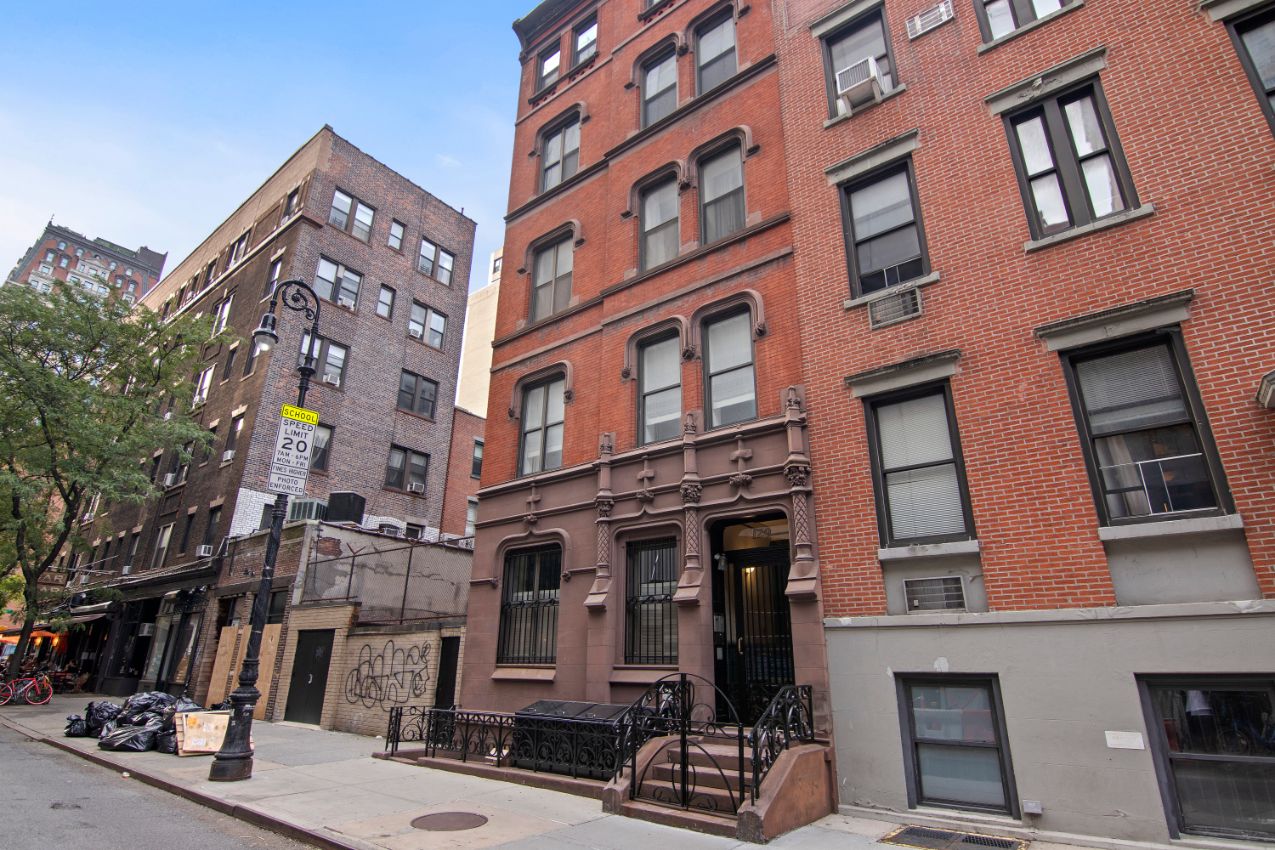
Built in 1879, 129 East 17th Street is considered by some to be the oldest surviving genteel apartment house in New York. It is a five-story brick and brownstone structure built in the French Gothic Revival style. At the time of its construction, apartment living was uncommon for the middle class, and the Gramercy Park neighborhood was mostly rowhouses.
In order to entice the middle class, the building featured upscale design touches like carved marble mantels to differentiate itself from the more common tenement buildings which catered to lower income individuals. 129 East 17th Street was designed by American architect Napoleon LeBrun who also designed several French Gothic firehouses in New York City.
129 East 17th Street - View on Google Maps
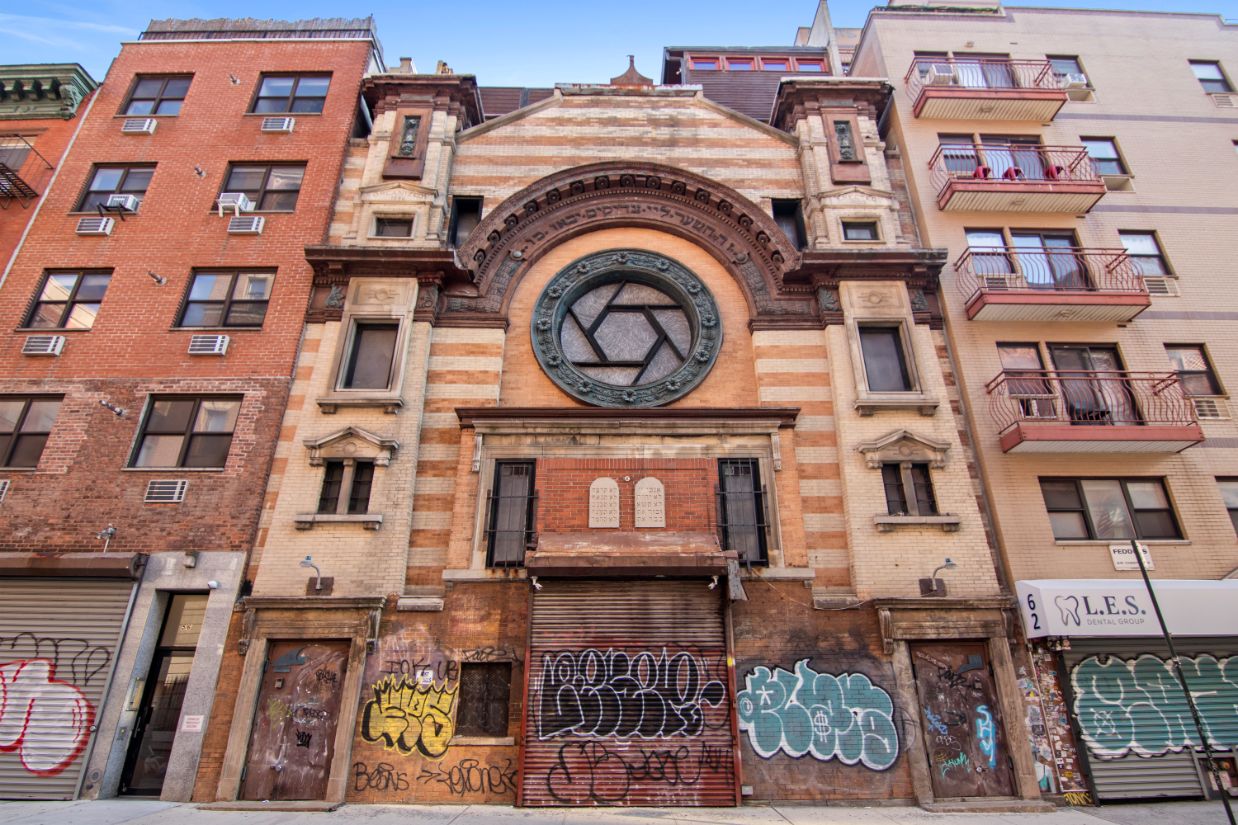
The Adath Jeshurun of Jassy Synagogue 58 Rivington Street was built in 1904. It was designed by architect Emery Roth and features Moorish Revival architecture. The building was abandoned in the mid 1970s until it was purchased by Hale Gurland in 1979 and subsequently turned into residences and artist’ studios which remain today.
58 Rivington Street - View on Google Maps
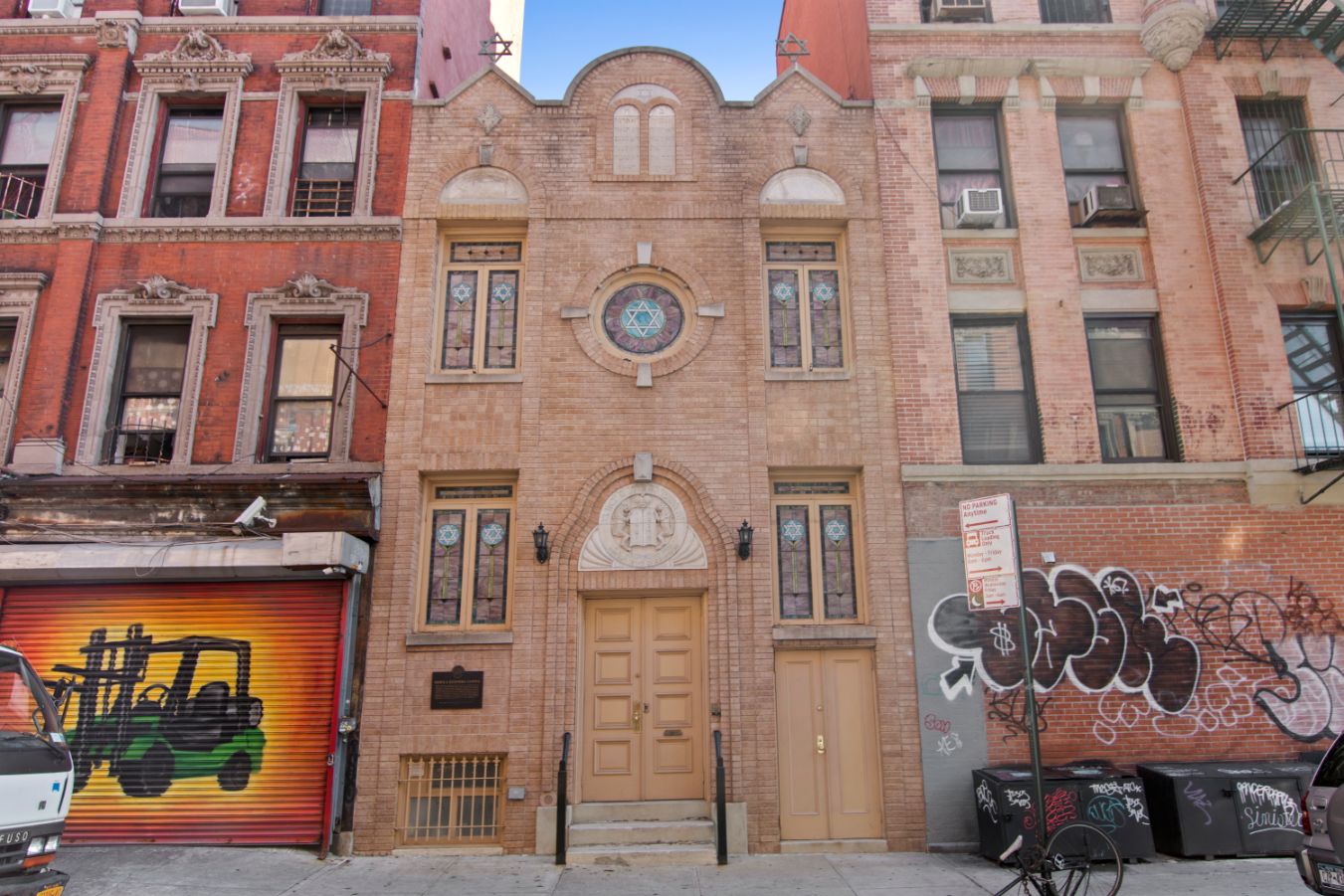
Built in 1926-1927, 280 Broome Street is home to the Kehila Kadosha Janina Synagogue. It is the only Romaniote rite synagogue in the Western Hemisphere. The synagogue was constructed by a small group of Romaniote Jews who emigrated from the town of Ioannina in northwestern Greece. It was designated a New York City landmark on May 11, 2004, and it’s also listed in the National Register of Historic Places.
280 Broome Street - View on Google Maps
A Full Service Listing for 1%
Sell your home with a traditional full service listing for just one percent commission.
Posted: 8/10/20
Disclosure: Hauseit® and its affiliates do not provide tax, legal, financial or accounting advice. This material has been prepared for informational purposes only, and is not intended to provide, and should not be relied on for, tax, legal, financial or accounting advice. No representation, guarantee or warranty of any kind is made regarding the completeness or accuracy of information provided.





